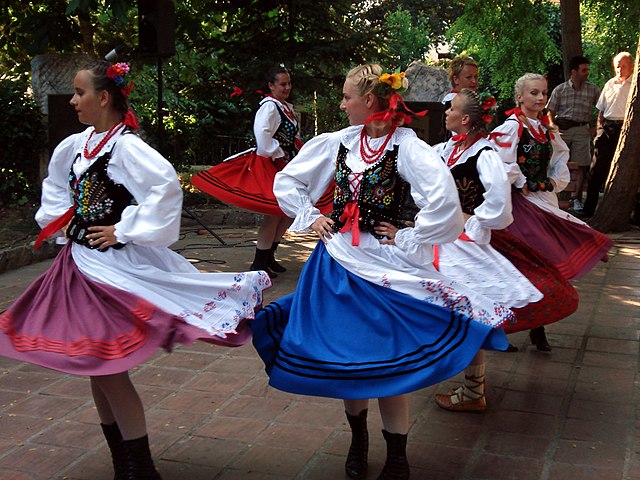Polonezköy
Polish village in Istanbul, Turkey From Wikipedia, the free encyclopedia
Polish village in Istanbul, Turkey From Wikipedia, the free encyclopedia
Polonezköy or Adampol is a neighbourhood in the municipality and district of Beykoz, Istanbul Province, Turkey.[1] Its population is 346 (2022).[2] It is on the Asian side of Istanbul, about 30 km (19 mi) from the historic city centre.[3] It was inspired and funded by Prince Adam Jerzy Czartoryski and settled in 1842 by a small group of Polish emigrės, after the failed November Uprising.[4] There is still a Polish community there with its own church and cemetery.
This article needs additional citations for verification. (February 2015) |



Polonezköy (from French polonaise "Polish" and Turkish köy "village"), known in Polish as 'Adampol', was founded in 1842, from an idea of Adam Czartoryski.[5] At the time he was Chairman of the Polish National Uprising Government and the leader of a political émigré party. The settlement was first named Adampol (that is, a Polish transcription of the Turkish Adamköy) in his honour.
Prince Czartoryski wanted to create a second emigration centre in Turkey after the first in Paris. He sent his representative, Michał Czajkowski, there and purchased the forest area which encompasses present-day Adampol from the missionary order of Lazarists. Plans were made to establish a future settlement on this spot. At the beginning, the village was inhabited by just 12 people; there were never more than 220 Poles even at the peak of its population. Over time, Adampol developed and was expanded by emigrants from the 1848 revolutions, the Crimean War in 1853, and by runaways from Siberia and from captivity in Circassia.[6] The first inhabitants busied themselves with agriculture, cattle raising and forestry. Michał Czajkowski converted to Islam in 1850 and became known as Mehmed Sadyk Pasza (Mehmet Sadık Paşa).
After Polish independence in 1918, many returned to Poland and the remaining inhabitants took Turkish citizenship in 1938. Already before World War II, the first tourists started arriving in the village. Adampol's village chronicles record the visits of famous people such as Franz Liszt (1847), French writer, Gustave Flaubert (1850), Czech writer, Karel Droz (1904), the first President of the Turkish Republic Mustafa Kemal Atatürk (1937), Pope Nuncio Angelo Roncalli - the future Pope John XXIII. During his visit in 1941 he gave religious confirmation to local children. The first Polish politician to visit after the Second World War was Adam Rapacki, then the Minister of Foreign Affairs of the Polish Republic, accompanied by Turkish dignitaries (1961).
In 1985 the village was visited by Kenan Evren, the head of the temporary military dictatorship during that period in Turkey, and in 1994 by Lech Wałęsa. The next President of Poland, Aleksander Kwaśniewski, came twice to Adampol in 1996 and 2000, when he visited the Memorial House of Zofia Ryży. In 2002 Adampol celebrated the 160th anniversary of its founding.
Polish descendants of the founders of Adampol often visit the settlement of their forebears. Today, there are about 1,000 people in Adampol of whom around 40 speak fluent Polish. There is an annual summer festival in Adampol/Polonezköy which invites folk bands from Poland to play and help maintain the cultural ties between it and Poland. Famous Turks with Polish ancestry include the poet and playwright Nazım Hikmet and the soprano opera singer Leyla Gencer.
Polonezköy is twinned with:
Seamless Wikipedia browsing. On steroids.
Every time you click a link to Wikipedia, Wiktionary or Wikiquote in your browser's search results, it will show the modern Wikiwand interface.
Wikiwand extension is a five stars, simple, with minimum permission required to keep your browsing private, safe and transparent.